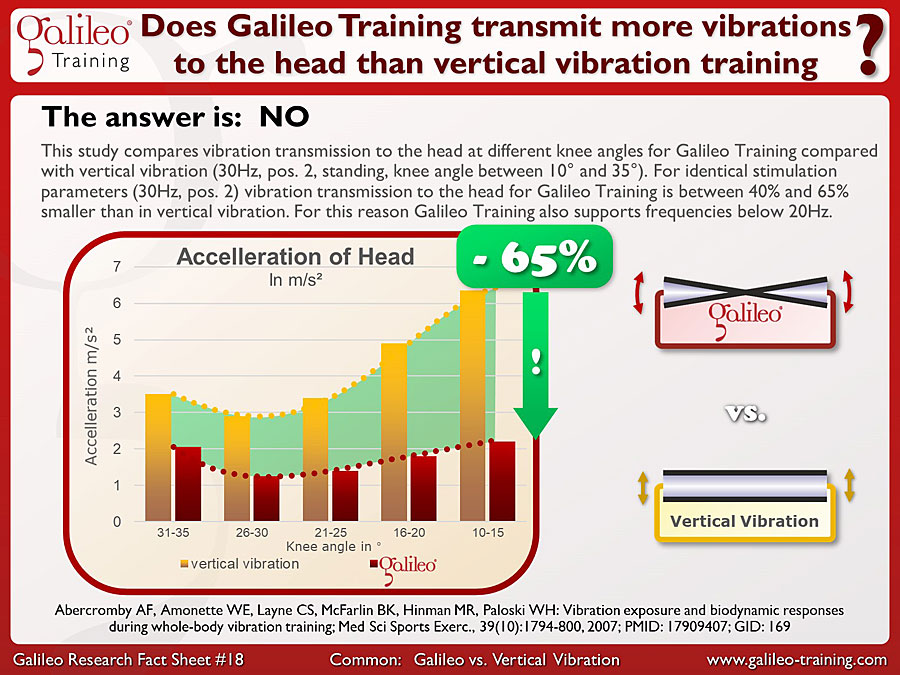Galileo Research Facts No. 18: Does Galileo Training transmit more vibrations to the head than vertical vibration training?

As this study shows, this is in fact not the case. You can test and feel the difference using your Galileo device right away: Stand with straight legs symmetrically on position 2 at 18Hz. The transmission of the vibration to the head is very low in this position. Now turn 90° (both heels are now on one side of the platform at position 2) and shift you weight on the heels. Now there is a massive vibration transmission to the head (Please don’t try this when you have any back-issues and if not only try it for a very short time!!!).
Why does this make such a difference? The answer is simple geometry: Due to the side-alternation of the Galileo plate one leg is lifted while the other can drops – therefore the spine can stay at its position in space and the hip tilts around the pivoting point of the spine (the feet are not lifted at the same time as in vertical vibration). At the same time this side-alternation which mimic human gait stimulates the muscles of the back, because at mid and high frequencies (#GIS1) they try to stabilize the tilting hip. This is one of the reasons why Galileo Training can be so effective in relaxation of the back (#GRFS9, #GRFS16, #GRFS38).
By the way: even at identical parameters (frequency, amplitude) Galileo Training causes significantly higher muscle activation (#GRFS2) and at the same time lower joint force r (#GRFS6) as in vertical vibration.
#GRFS18 #GalileoTraining #GalileoResearchFacts #GRFS #VibrationTransmission #WholeBodyVibrationTraining #MechanoStimulation #VibrationTraining
- Produktgruppen: Galileo Therapy, Galileo Training
- Themen: Athletics, Back, Back Pain, Diseases, Fit Aging, Fitness at Home, Fitness at the Gym, Fitness at Work, Geriatrics, Health Promotion at Work, Incontience, Medical Applications, Neurological Conditions, Orthopedic Diseases, Osteoporosis, Paediatrics, Pelvic Floor, Prevention, Pyhsitherapy & Rehabilitation, Stroke, SCI, Therapy & Prevention using Galileo, Training & Education, Training for Kids, Training with Galileo, Wellness & Beauty